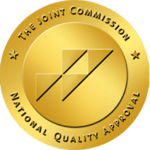Analgesics is the medical term for painkillers. Painkillers fall into four distinct categories: non-opioid, anti-inflammatory, compound, and opioid. Some painkillers are over-the-counter (OTC), while others require a prescription. All painkillers can be misused, and even OTC painkillers can negatively impact the body in certain circumstances. Compound painkillers can be potentially addictive, while opioid painkillers are highly addictive and are at the root of the current opioid epidemic. While awareness of the opioid epidemic is on the rise, many are still unaware of how easy it is to slide into opioid addiction until it happens to them. If you have found yourself in this position, you can benefit from painkiller addiction treatment.
Westwind Recovery® provides comprehensive addiction and mental health treatment in Los Angeles. No matter your lifestyle or the level of care needed, we have a program to help you overcome painkiller addiction. To find out more about your treatment options, call 855.340.8832.
Painkiller Addiction Withdrawal Symptoms
The terms “opiate” and “opioid” are often used interchangeably, but they are different. Opioids include natural, semi-synthetic, and synthetic opioids, while opiates refer only to natural opioids. Codeine and morphine are natural opiates. Heroin is semi-synthetic because it is made from morphine that has been chemically altered. All other opioids, such as methadone and fentanyl, are synthetic. No matter the classification, they all carry a high risk for addiction and overdose.
Most opioid addiction begins with prescription painkillers. A significant portion of heroin addiction is linked to individuals with chronic pain who can no longer access or afford prescription painkillers. Heroin is cheap and readily accessible. Developing a dependency on painkillers is not a result of weakness or lack of willpower. The brain quickly adapts to the presence of these substances and, because it naturally wants the body to be at ease, fights against their absence. When this happens, we say that people are having withdrawals.
Withdrawal is a combination of physical and psychological symptoms that occurs when an individual suddenly stops using a substance or substantially reduces their intake. Common signs of painkiller withdrawal can include:
- Stomach cramps, nausea, and vomiting
- Muscle spasms and aching bones
- Agitation, anxiety, and depression
- Runny nose, tremors, and sweating
- Diarrhea
- Fluctuating blood pressure
- Insomnia
These symptoms range from mild to severe and depend upon factors such as the type of painkiller, other substance use, length of use, the severity of addiction, mental health, and medical history. Additionally, individuals who have gone through detox before tend to have more severe withdrawal symptoms.
Painkiller Withdrawal Timeline
While most withdrawal symptoms are not life-threatening, they can cause significant physical and psychological distress. Fear of withdrawal symptoms is a common reason people continue to abuse painkillers, even when they are aware of the risks. Individuals who try to stop using on their own rarely succeed because of the intensity of their withdrawal symptoms. There are four stages of painkiller withdrawal:
- Anticipatory – Begins three to four hours after the last dose. Marked by increasing anxiety or fear about experiencing withdrawal, cravings, and drug-seeking behaviors.
- Early acute – Eight to ten hours after the last dose. Anxiety and restlessness increase and flu-like symptoms begin. Cravings and drug-seeking behaviors persist.
- Fully-developed acute – One to three days after the last dose. Symptoms are at their peak with tremors, muscle spasms, diarrhea, and insomnia. Cravings are strongest during this phase.
- Post-acute withdrawal syndrome (PAWS) – Up to 24 months after the last dose. Acute symptoms have decreased, but individuals may experience anxiety, depression, mood swings, insomnia, and more. Cravings still exist, and individuals are highly susceptible to triggers for relapse.
A medically supervised drug and alcohol detox center in Los Angeles is a safe, structured, and comforting environment where you can receive 24-hour support to effectively manage your painkiller withdrawal symptoms.
Contact Westwind Recovery® for Painkiller Addiction Treatment
If you are in the grips of painkiller addiction, you do not have to let the fear of painkiller withdrawal symptoms prevent you from seeking treatment. Westwind Recovery® provides medically supervised drug and alcohol detox to ensure that the process is safe, effective, and as comfortable as possible. For those in need, we also offer medication-assisted treatment to ease painkiller cravings.
Following detox, we recommend that you participate in our painkiller addiction treatment program, where you can receive the tools you need to overcome addiction and live a life of fulfillment. Contact us at 855.340.8832 to get started.

Dr. Deena is the Chief Clinical Officer of Westwind Recovery®, an award-winning outpatient treatment center in Los Angeles where she oversees the clinical and administrative program and treatment methods. Dr. Deena is a doctor of psychology and licensed clinical social worker since 1993. LCSW #20628. Originally from the East Coast, Dr. Deena has worked running treatment centers, worked as a therapist in psychiatric hospitals as well as school settings and currently has a thriving private practice in the LA area. Dr. Deena has appeared regularly on the Dr. Phil Show as an expert since 2003. She has also been featured on many other TV shows, podcasts and has contributed to written publications as well as podcasts.



